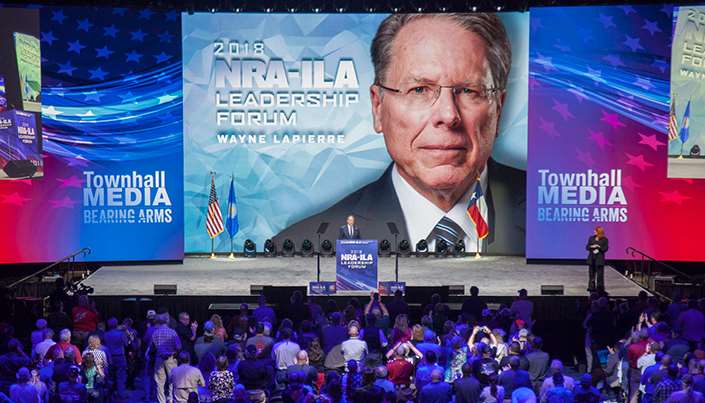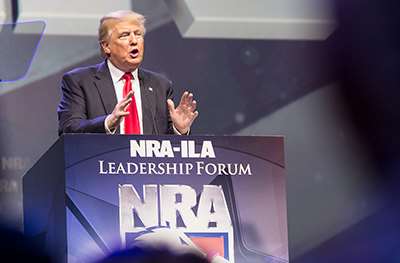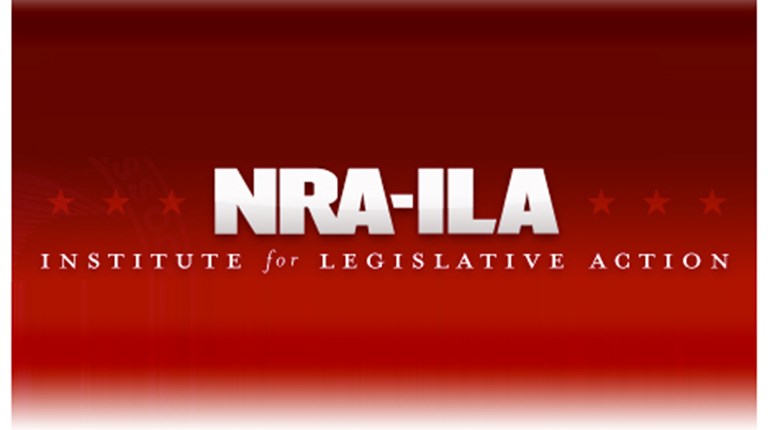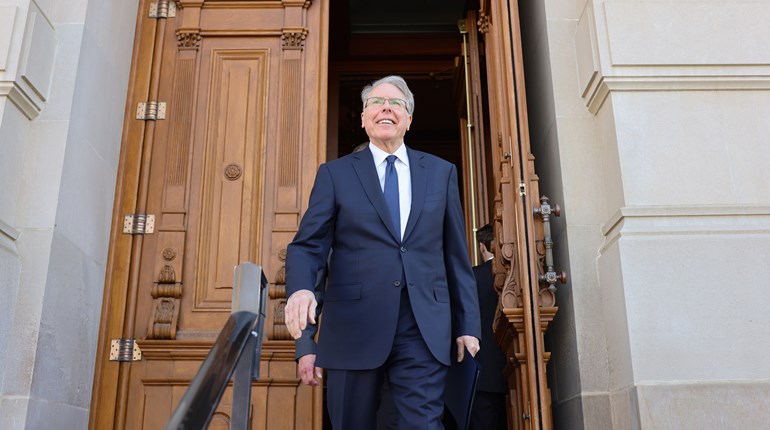
Those who insist history turns on a one-way ratchet, and that liberties, once lost, are never recovered, have clearly not been following the work of the National Rifle Association (NRA) and its millions upon millions of members.
There was a time in American history when things looked bad for the future of the Second Amendment.
Ignored in the courts, infringed by politicians of all stripes and dismissed in the press and in the universities as an awkward anachronism, it seemed for a while as if the right to keep and bear arms would simply fade away. And yet, to the surprise of many, it did not. Instead, bit by bit, law by law, fight by fight, election by election, the Second Amendment was gradually restored back to health, until, after decades of hard work, it has been almost completely revived.
It is impossible to overstate the threat that the Second Amendment faced or the scale of the restoration that has been achieved. Without the NRA and its engaged members, the United States would be a country in which the Second Amendment—an explicitly enumerated individual right—would have been rewritten as a “collective right” only enjoyed by the government and its agents.
If that had been allowed to occur, this would be a country in which standard, commonly owned semi-automatic rifles would be prohibited based on their appearance. It would be a country in which a byzantine thicket of federal and state laws would have turned every mistake into a crime, and every crime into a felony. It would be a country in which cities and municipalities would be free to impose draconian local restrictions rendering it almost impossible for gun owners to know what was legal and what was not. It would be a country in which only the wealthy and politically connected would enjoy the right to carry concealed firearms. It would be a country in which gun manufacturers could be sued out of existence for crimes they neither committed nor were responsible for. It would be a country in which Americans who came under attack would be prosecuted for defending life. It would be a country in which the government could use natural disasters or the breakdown of law and order as an excuse to confiscate weapons. It would be, in short, a country in which the U.S. Constitution’s guarantee of “the right of the people to keep and bear arms” would not be worth the paper it is written on.

Then Came NRA-ILA
There have been many key moments in this fight, but the first major development in this modern period was the creation of the NRA’s Institute for Legislative Action (ILA) in 1975. The founding of NRA-ILA created the team necessary for what came on May 19, 1986, the date in which President Ronald Reagan signed the Firearms Owners’ Protection Act (FOPA).
The FOPA was designed to remove from American law those parts of the 1968 Gun Control Act that were proving destructive to the right to keep and bear arms. It also reintroduced some common sense into federal-firearms regulation so that this right could be practically enjoyed.
In effect, the FOPA has two parts. The first part ensures that the Bureau of Alcohol, Tobacco, Firearms and Explosives (ATF) may not harass or entrap licensed gun dealers with perpetual and pedantic inspections deliberately designed to force them out of business. The second part ensures that gun owners are not tracked in their every move or subjected to such elaborate rules that they cannot exercise their rights without fear of going to jail.
Among the provisions that FOPA entrenched into law were:
• Prohibition on any registry that links firearms directly with their owners;
• Abolition of record-keeping for ammunition sales;
• Legalization of interstate long-gun transfers by licensed dealers; and
• Establishment of crucial federal protection for those who transport legal firearms through states with stricter rules than their own.
Typically, nations destroy their citizens’ right to bear arms not in one fell swoop, but through thousands of minor cuts. The FOPA did the opposite: It healed thousands of minor wounds, and, in so doing, reversed the trend back toward the presumption of individual liberty.
Provisions such as those contained within FOPA do not tend to make the news in the same manner as do those concerning more controversial measures, such as banning of certain types of firearms. And yet they are, arguably, prerequisite steps that make the better-covered victories possible.
As is the case with their counterparts abroad, the core aim of the anti-Second Amendment forces in the United States is to transform a right that can be asserted against the state into a privilege that can be enjoyed only with permission. One way of doing this runs through the courts. But the other, less obvious, course runs through the regulatory state. Since the early 1980s, beginning with the FOPA, the NRA has routinely recruited the public to its side to fight these attempts to nibble around the edges, and it has routinely won.
A Record of Freedom
In 1994, only eight states had laws that prevented local governments from closing down gun ranges on frivolous zoning or ordinance pretexts. Today, that number is 48. By 1996, the Centers for Disease Control and Prevention (CDC) had spent millions of taxpayer dollars on junk science advocating for further gun control and casting the Second Amendment as a public-health problem. Today, it is barred from spending any public money to lobby against the right to keep and bear arms.
Before 2005, overzealous litigators were busy trying to find ways to get the gun bans they coveted by bankrupting manufacturers whose guns, through no fault of their own, were used in crimes. Since 2005, the Protection of Lawful Commerce in Arms Act (PLCAA) has put an end to this tactic.
The NRA has also been instrumental in bringing attention to the Obama administration’s “Operation Choke Point” program, which used the considerable power of the federal government’s banking regulators to try to throttle any industries and organizations that the executive branch happened to disfavor. Operation Choke Point was officially canceled in 2017.
It’s important to take care of the little things. And when you do, the big things follow. And, boy, have some big things followed. It bears repeating once again that the advances made in recent decades are nothing short of miraculous.
Take concealed carry, which was once the preserve only of the politically well-connected, but is now a right that is routinely exercised by millions. There are now nearly 19 million concealed-carry permits and 16 states that don’t require a permit. About 1 in 10 adult Americans across all 50 states now legally exercise their right to carry a concealed firearm. In 1990, only 16 states permitted law-abiding citizens to carry concealed firearms for their protection. Today, every single state has some form of concealed-carry recognition.
It is worth noting that, when this process of reform began, it was met with considerable skepticism and resistance. Back then, outlandish claims about what would happen if Americans were trusted to exercise their Second Amendment carry rights were made—and, often, believed. But, as concealed carry became more normal and more widespread, those who continued to make such predictions began to look foolish, and, by 2015, a considerable majority within the American public had begun to routinely tell pollsters that concealed carry made America safer. Without the NRA and its members patiently making this case, it is unlikely that the concealed-carry revolution would have been won.
Of course, a permit is of no use unless its holder is free to use it in practice, which is why, in tandem with these reforms, the NRA has helped to effect a transformation in the rules governing where—and how—Americans may carry guns.
A majority of states now recognize carry permits issued by at least some other states, and many of those states recognize carry permits from every other state. In 2017, Congress came closer than ever to ensuring that all states are obliged to respect the permits of the others when the U.S. House of Representatives passed the Concealed Carry Reciprocity Act. Although the bill died in the Senate, it got within one chamber’s vote of passage—a testament to years of work that will come to fruition.
Meanwhile, over the last 10 years, the federal government has lifted its prohibition on carrying in national parks and fish and wildlife refuges, while the majority of states have repealed rules that prevented law-abiding citizens from carrying in other places in which innocent lives may be threatened.
Likewise, 33 states and the federal government have passed laws barring officials from confiscating firearms or restricting the right to carry during a declared state of emergency. Concurrently, the NRA has helped usher in “Stand-Your-Ground” laws to ensure that, when the lives of the innocent are threatened, potential victims are free to defend themselves.
Since 2005, the number of states with Stand-Your-Ground provisions has grown to 27 (or 34, if you count states in which such a system is, de facto, in place). From carry rights to permit-issuing rules, an American visiting from 1980 would look at the country now and say, “Wow, they actually saved it.”
State by State
Nowhere has this renewal been more dramatic than in the states, where the NRA has worked assiduously to prune bad laws and to grow new good ones. There is a great deal of focus on the role the courts have played in reclaiming the Second Amendment, and for good reason. But the last four decades is the story of the American people standing up and saying, “Enough.”
In the last few years alone, state legislatures have passed more than 400 NRA-backed pro-Second Amendment bills—touching almost every aspect of private gun ownership. Concealed carry and open carry have both been expanded. Reciprocity arrangements have been struck. Registries have been stopped. Waiting periods have been nixed.
Before 1981, just three states had preemption laws that prevented towns and municipalities from passing their own, stricter, firearms and ammunition rules. Today, that number is 45. This change has been of vital importance in ensuring that citizens understand the rules that govern the exercise of their rights. Without preemption, a concealed-carrier might be subject to multiple differing regulations while driving across his own state. Without preemption, gun sellers would be bound by divergent rules depending on the town or county where their store happens to be located. Without preemption, one’s Second Amendment protections would be determined by one’s zip code.
As history illustrates, law-abiding people strive not to violate the law, so they tend to stop behavior that might cross the legal line. Preemption has limited the circumstances in which good citizens wonder “is this legal?” It has thereby expanded the circumstances in which they feel free to exercise their rights.
In addition, it has ensured that outlier cities may not subvert the will of the state legislature, and, in doing so, render its laws moot. Even before the U.S. Supreme Court’s decision in D.C. v. Heller (2008), state preemption ensured that San Francisco was prohibited from enforcing a total ban on the ownership and sale of firearms within its city limits. Federalism is one of the U.S. Constitution’s great blessings, but there are certain rights that are (and should be) exempt from local variation. The Second Amendment protects one of those rights.
That the Second Amendment protects an enforceable individual right has been clear from the Founding era. As a matter of fact, polling shows that the American public has always understood that “the right of the people to keep and bear arms” means just that: “the people” have a “right” to “keep and bear arms.”
But, by the 1970s, this self-evident interpretation was being dismissed in our universities, in the press and by many in Congress. Appalled by the casual rejection of a core civil liberty, the NRA led a movement to replace this disgraceful historical revisionism with the truth.
Today, it may seem astonishing that this was necessary. For almost all of American history, the individual right to keep and bear arms was so broadly accepted and comprehended that it would render the alternative interpretation absurd.
But, once again, in order to understand why such a confirmation was necessary, we must recall the dire straits the Second Amendment was in back in the early 1980s. Argument by argument, debate by debate and case by case, we must remember that the NRA set about dismantling the lies.

Winning Our Freedom Was Not Happenstance
The initial breakthrough came in 1982, four years before the FOPA, when the U.S. Senate Subcommittee on the Constitution looked into the question and affirmed, emphatically, that “What the Subcommittee on the Constitution uncovered was clear—and long lost—proof that the second amendment to our Constitution was intended as an individual right of the American citizen to keep and carry arms in a peaceful manner, for protection of himself, his family, and his freedoms.”
Soon after, the academic dam began to break—first with the publication of Sanford Levinson’s The Embarrassing Second Amendment (notable because Levinson disliked the right to keep and bear arms, but was nevertheless prepared to tell the truth about it in the face of overwhelming evidence). Next, with the NRA’s establishment of Academics for the Second Amendment, the purpose of which was to promote scholarships that reflected the “clear proof” in the record, the direction was re-charted toward freedom.
By the late 1990s, the ship was turning around, with even anti-gun academics, such as Laurence Tribe, reluctantly conceding that the Second Amendment protects an individual right.
So comprehensive was the evidence the NRA had helped to marshal that it was not long before the courts caught up and cottoned on. A series of cases in the early 2000s led to the favorable decision in 2008’s D.C. v. Heller (in which the NRA filed an amicus brief), which, in turn, led to the favorable decisions in Guy Montag Doe v. San Francisco Housing Authority (which the NRA led) and McDonald v. Chicago (in which the NRA took part). Further litigation, such as the NYSRPA v. City of New York, is currently pending.
The work that the NRA did in pulling apart the “collective-right” myth proved crucial—and will continue to prove crucial—to the political and judicial recognition that the Second Amendment is no less important than any other part of the U.S. Constitution.
But, on its own, that work was not sufficient to effect change. Which is why, at the same time, the NRA was and is engaged in a second, equally important, project: Ensuring that any politician who assumes power in America has vowed to remain loyal to the Second Amendment, and, by the same token, that all judges tasked with interpreting and enforcing the law are willing to stay faithful to the Constitution as it is actually written.
To this end, the NRA Political Victory Fund set up a detailed rating system for politicians and would-be politicians alike, linked to their voting records and public statements; made sure to inform the public how each of those politicians was voting on each issue and which remained in good standing; and, more recently, weighed in on judicial nominations, most recently throwing its support behind the nominations of Justices Neil Gorsuch and Brett Kavanaugh. These changes have helped to remake American politics along pro-Second Amendment lines.
This is made clear by a simple question: “What if?” What if the NRA had sat by as the revisionists successfully rendered the Second Amendment meaningless? What if, having not fought that battle, the NRA had declined to fight for the future of the courts? What if the NRA had remained silent as frivolous, politically motivated litigators hollowed out our gun manufacturers one by one? What if the NRA had buckled under and permitted the right to carry to fade into history? What if the NRA hadn’t helped to prohibit the sort of national gun registry into which pro-confiscation radicals, such as Beto O’Rourke and Sen. Kamala Harris (D-Calif.), seek to tap?
What if, indeed.
Politics belongs to those who show up. The NRA shows up—then, now, tomorrow and forever.
Refuse To Be a Victim
One of the most-important steps toward ensuring your own safety is having a personal-safety strategy in place before you need it. This is why the NRA developed its Refuse To Be A Victim program (rtbav.nra.org). This program teaches the tips and techniques you need to be alert in dangerous situations and avoid criminal confrontations. Seminars are held across the nation and are open to individuals of all ages. Today, thousands of federal, state and local law-enforcement officials and civilians from across the nation utilize this popular program in their crime prevention and community policing initiatives to help protect their communities. Corporations, educational institutions and community centers have also adopted the program. All told, more than 100,000 people have benefited from these seminars.


































